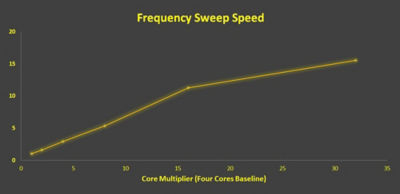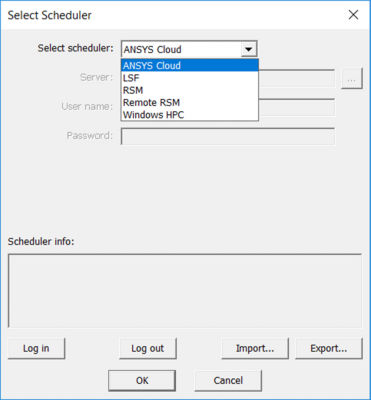-
-
学生向け無料ソフトウェアにアクセス
Ansysは次世代の技術者を支援します
学生は、世界クラスのシミュレーションソフトウェアに無料でアクセスできます。
-
今すぐAnsysに接続!
未来をデザインする
Ansysに接続して、シミュレーションが次のブレークスルーにどのように貢献できるかを確認してください。
国および地域
無料トライアル
製品およびサービス
リソースとトレーニング
当社について
Back
製品およびサービス
ANSYS BLOG
August 20, 2019
Ansys HFSS and Ansys SIwave Extend Their HPC Capabilities on Ansys Cloud
As simulations increase in size, complexity and demand, engineers will need high-performance computing (HPC) options that can deliver results quickly and easily. To that end, the parallel processing capabilities of Ansys HFSS and Ansys SIwave have been implemented in Ansys Cloud. With this, electrical engineers gain access to the HPC capabilities of Microsoft Azure without having to maintain on-premise resources or create new business relationships with cloud hosting providers.
The release of Ansys Cloud made quite a stir for engineers in small- to medium-sized businesses. They were able to leverage pay-as-you-go, scalable computing resources, on-demand, enabling them to compete with the simulation capabilities of large engineering firms.
As for larger engineering firms, they could use Ansys Cloud to reduce capital hardware expenses or access additional HPC resources when their current resources are in high demand. This release gives electronics engineers access to HPC cloud resources without needing to purchase any additional hardware. As a result, engineers can take full advantage of:
- Matrix multiprocessing
- Distributed memory matrix solvers
- Domain decomposition method
- Parallel frequency points
- Parallel parametric sweeps
Engineers using HFSS on Ansys Cloud can also take full advantage of:
- Multi-tier HPC that layers parameters, frequencies and solvers into a scalable solution hierarchy
- Hybrid solvers that combine the finite element method (FEM) with method of moments (MoM) and/or physics optics (PO) within a system matrix
These capabilities enable engineers to solve large simulations of devices, like antennae and printed circuit boards (PCB), for applications driving industry trends such as 5G, electrification and autonomous vehicles.

PCB test board with 44 ports analyzed on ANSYS Cloud with a 128 core HPC
Ansys Cloud HPC Capabilities
Engineers can leverage the hardware of Ansys Cloud to utilize the HFSS distributed memory matrix solver. This solver can process a single matrix across networked machines and memory — meaning a problem’s size is no longer limited to the shared memory of a single workstation.

Frequency sweep speed up as a function of core multiplier on ANSYS Cloud. Baseline is a 4-core shared memory workstation.
With this solver technology, a test simulation of a 44-port PCB realized an 85% reduction in memory per machine — compared to a single, 4-core shared memory workstation. Then, with the distributed memory matrix solver’s ability to utilize multiple networked cores, matrix solve times for a single frequency can be reduced by up to a factor of 2.
When Ansys Cloud’s HPC capabilities are applied to extracting frequency sweeps, the basis points can be solved in parallel. The memory footprint of these frequency points can be reduced by a factor of 3 to 4 by using the S-parameter matrix solve. This means that more frequency points can be packed and solved in parallel. Frequency sweep extraction on 128 cores, in Ansys Cloud, was 15 times faster than a 4-core workstation for the same 44-port test board.
How to Access Ansys Cloud
Launching to the Cloud from Ansys Electronics desktop is easy. It uses the same interactive Submit Jobs menu to launch a Windows HPC managed cluster. Choosing the cloud launch is as easy as clicking on the drop down from Scheduler Selection.
Running simulations with HFSS on Ansys Cloud is easy to perform and can speed up the complete analysis of a design by a factor of 10 or more compared to typical workstation hardware. This means that a daylong solution could be reduced to a few hours, or even less. This increased speed and efficiency translates into engineers developing better, more optimized designs because they quickly iterate through multiple variations within a single workday.
Get a 30-day free trial of Ansys Cloud.
To launch to Ansys Cloud the user selects it from Ansys Electronics Desktop Select Scheduler menu. The Interface is identical to existing cluster launches (e.g., Windows HPC).

To launch to Ansys Cloud the user selects it from Ansys Electronics Desktop Select Scheduler menu. The Interface is identical to existing cluster launches (e.g., Windows HPC).